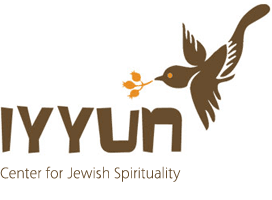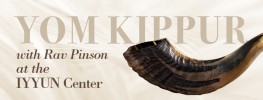Remembering
The Zohar says there are fifty verses in the Torah where we are asked to remember our time in Egypt, and our going out of Egyptian slavery. (Tikunei Zohar, Tikun 32) *
What does it mean to ‘remember going out of Egypt’? The Mishnah (Pesachim 116b) says, “In every generation a person must regard himself as if he himself had gone out of Egypt.†In other words, we must envision our own redemption, as if the Exodus was happening in our generation. This doesn’t just literally mean in “every generationâ€, but that every day and every moment we have to remember that we are going out of Egypt.
Understanding
Egypt represents lack of spiritual clarity. In the state of consciousness called ‘Egypt’, we forget who we are.* In order to go out of Egypt, we need the clarity that comes from ‘remembering’ or ‘understanding’, referring to the attribute of bina. Redemption can occur when we ‘remember’ and become a channel for a flow of deeper understanding of reality. This flow of understanding is described as the mei bina—the waters of bina. R. Meir Ben Gabbai points out (Taalos Yakkov. p. 102) that the numerical value of mei, is fifty: Mem (40) plus Yud (10). The number fifty hints to the power of bina to bring Redemption.
Returning, Jubilee, Fifty
- Kabbalah teaches that there are fifty ‘gates’ or levels on our spiritual path, and the fiftieth gate is bina, absolute clarity and freedom. This teaching follows the pattern of the Torah law of Yovel, the Jubilee year, which occurs on the fiftieth year of a fifty-year cycle. During the Jubilee, slaves went free, debts were cancelled, and land returned to its original owner. In other words, all things clearly ‘remembered’ their own inner truth and were redeemed, returning to their original state.
The Zohar (3:108a) says that the complete freedom of Yovel corresponds to the “upper†or first letter ‘Hei’ in Hashem’s name, Yud – Hei – Vav – Hei. The numerical value of the letter ‘Hei’ is five. The upper Hei, however, is called the ‘full Hei’—the full or expanded five, which is fifty. Fifty is seven times seven, plus one.
Resting, Shemitta, Seven
A lower type of redemption occurred on each of the seven seven-year cycles preceding the Yovel year. This year is called Shemitta, the year when the land is left to rest as we refrain from planting crops. The relative freedom of Shemitta corresponds to the lower, or final Hei of Hashem’s name.
The lower Hei represents rest, since when it appears at the end of a word it is silent. The lower Hei also represents the attribute of Malchus, which corresponds to the earth or land. When, on the Shemitta year the land is allowed to rest, the lower Hei of the Divine name experiences a degree of redemption. This is a lower freedom–the land is free from being planted and worked.
In our own lives, this type of freedom manifests as freedom from reaction. If someone insults you, and you choose not to react but remain silent, you are refraining from planting new seeds of conflict. Although you did not act in retribution, your mind and heart might still be upset. This is only a ‘one-dimensional’ form of freedom, since you have merely silenced your reaction, but you have not yet transformed your reactive impulse at its root.
Absolute and Relative Freedom
Shemitta brings freedom for the land—freedom in terms of action and reaction. Yovel, however, brings freedom for all beings—freedom in ‘thought’ or consciousness, as well as in action. This is the complete freedom that comes from bina, the higher Hei. Bina contains seven permutations of each emotional attribute. This ‘multi-dimensionality’ has a balancing effect, freeing one from reactivity. In a state of clear understanding, our- emotions are contained and balanced by a higher perspective sometimes called ‘intellect’. For example, if you are experiencing the expansive emotion of chesed from a higher perspective, you can be simultaneously in touch with the polar opposite emotion of gevurah. You are ‘thinking outside the box’, free to respond with awareness, rather than merely reacting or stuffing your reaction.
This is the deeper freedom we must illicit as we recite the Haggadah on Pesach night.
Telling and Drawing (Show and Tell)
The Midrash says that in Egypt the Jews were like a fetus within their mother’s womb. They were confined to being merely an extension of someone else, with no name or self-understanding. Going out of Egypt was like a birth. Bina is sometimes called eim habanim semeicha, ‘the Mother that gives birth to joy’ (Psalms, 113:9), referring to the joy of Redemption. How can the Pesach Seder help us achieve this birth?
The word haggadah means ‘telling’. Through telling the story of the Exodus, we ‘remember’ that we are going out of Egypt’. The deeper meaning of the word haggadah, however, is ‘drawing the heart’, as it says in the Talmud (Chagiga yuyu daf), “Words of hagadah are things that draw the heart.†Simply reciting the Hagadah on Pesach night helps us draw the clarity of bina, the supernal heart, into our lives.









